Disclosure: Meeple Mountain received a free copy of this product in exchange for an honest, unbiased review. This review is not intended to be an endorsement.
Sometimes, the best way to win a game is to make sure that your friend in the seat next to you has a bad day at the railyard. And that means intentionally tanking the company where you have shares, but your “friend” has more shares than you.
Sure, you can win a game of Iberian Gauge—the latest in the Iron Rail series of games from Capstone Games, based on a 2017 design by Amabel Holland—by politely buying shares in each rail line, and working with fellow shareholders to quickly build up the line’s reach across Spain and Portugal over the very quick one-hour playtime.
But where’s the fun in that?
Now if you don’t think sabotaging your neighbor is the right way to go, you can still win the old fashioned way, by using subtle tactics and savvy timing on buying shares to get ahead.
Let’s talk more about Iberian Gauge and whether this game is for you!
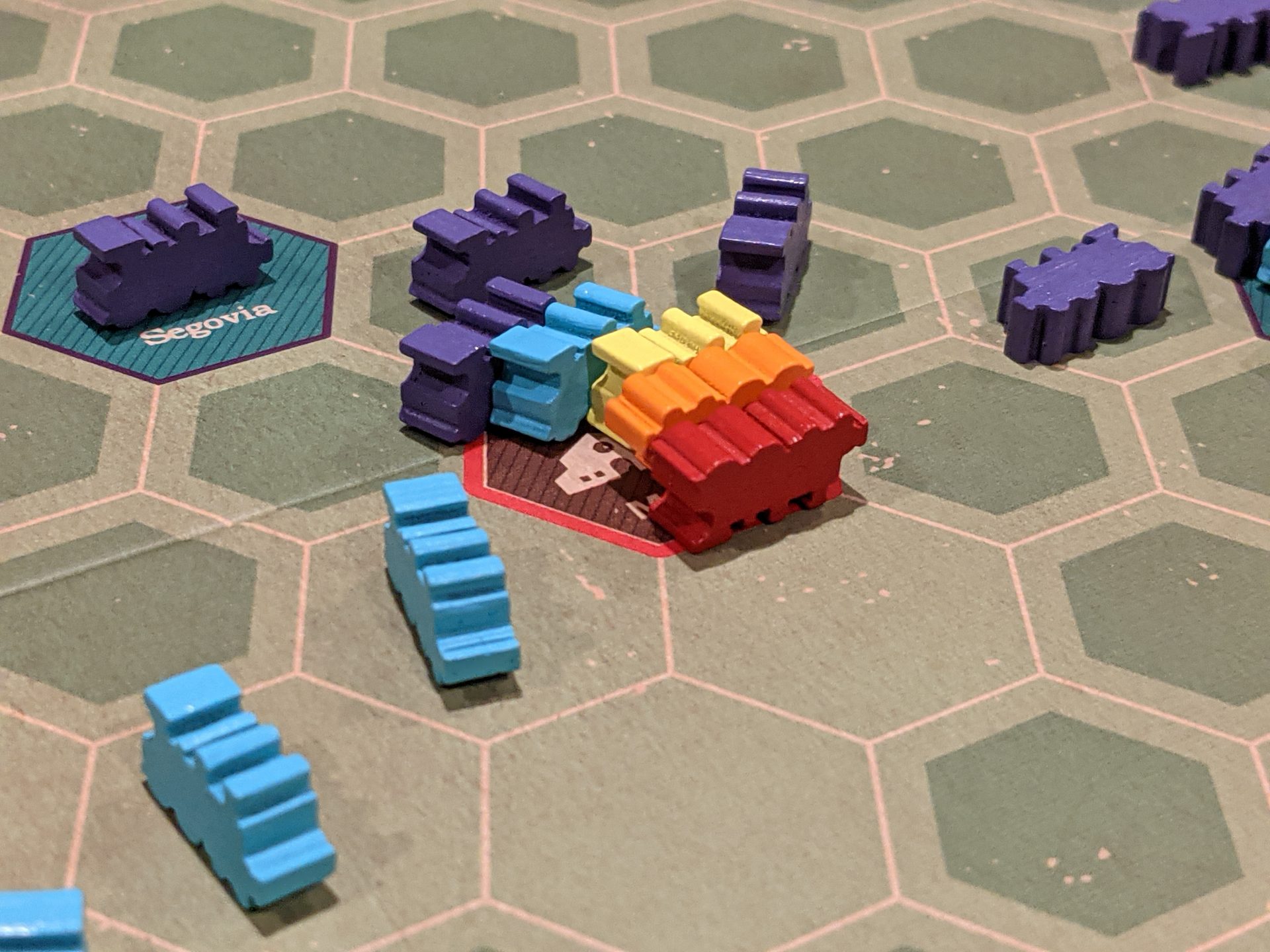
It’s a RuleSHEET, Not a Rulebook!
That’s correct: the rules for Iberian Gauge are so easy to teach that Capstone only needed one piece of double-sided paper to give players all that they need to play. I literally wet my fingers to try to open this single sheet, thinking that it had to be multiple pages and not a single-page rulesheet!!
Over the course of 10 turns, players will invest their personal treasury into the 5 available railroads to buy shares and end the game with the most personal wealth. Those 10 turns are separated into 4 Stock rounds and 6 Build rounds.
In the Stock rounds, you’ll have the choice of either starting a new railroad or investing in an existing railroad. Starting a new railroad features 4 steps:
- You’ll place one of your 12 Share cubes in the topmost space in that railroad’s Initiative tile. This means you will have the first choice of where that railroad gets to build in the Build rounds.
- Then, you’ll pick the starting share price of that railroad. That price, in pesetas, the game’s currency, is what you’ll pay from your personal treasury into the railroad’s treasury, which then becomes the money it uses to build track in later rounds.
- The initial shareholder gets to pick where that railroad will start its rail line on the main board. This will be in one of the “Major City” spaces denoted by a red hex.
- Finally, you will place that railroad’s dividend disk on the first space on the Dividends track. This is how you’ll track how much each shareholder earns per share throughout the game.
Others who invest in a railroad previously started will just pay for a share at the price listed on the Share Value Track, into that railroad’s treasury. Each railroad has between 4-6 shares. There’s one important rule about buying shares in Iberian Gauge: you can only buy a max of one share in each railroad per Stock round, to counter anyone trying to buy up all of the shares of a specific railroad in a given round.
Once everyone passes, you’ll move into a Build round. Building runs down the Initiative track in order, with any railroads currently in play building track based on the shareholder order. In this way, shareholders can work together—or not!—to build track across the map.
The legend on the board gives you all the info you need. The design of the Iberian Gauge board is really simple, another nod to excellent work done by Ian O’Toole and the team at Capstone. Track costs are easy: 4 pesetas to build one link of track in an “Easy” hex (plain green), 8 pesetas to build in a Difficult hex (darker green; let’s pretend this is mountainous terrain), and 4 pesetas to build in either an “Urban” (small town) or Major City hex. Only one railroad can own an Easy or Difficult hex, while each railroad can build one link of track in a named location, which means an Urban or Major City hex.
So, in shareholder order, each shareholder can build one link of track, by paying for it out of that railroad’s treasury and placing one of the 22 locomotives for that railroad on the map. Early in the game, that might mean only one or two locomotives are built in a round, but over the course of the game that should grow after each Stock round when more shareholders buy into a railroad.
As railroads connect through Urban hexes, their dividend price goes up by one slot. Every 3 bumps or so also raise the share value, so your investment will slowly rise as the game goes along. Railroads get an additional bump in share value each time they connect to a Major City, which raises the share value by one space in addition to giving that railroad a 2-space bump on the dividend track.
Where Iberian Gauge makes itself interesting, particularly in the second half of the game when the map is more congested, is with the concept of leasing track. Because only one railroad can own each non-named hex (Easy/Difficult), other railroads can still use those hexes by paying the railroad which owns a hex to lease the track, at a rate of half its normal price.
For example, the Purple railroad could lease track from the Red railroad by paying from its treasury into the Red railroad treasury and paying for each piece of railroad needed to get to another named location (Urban/Major City).
In this way, the map is always open, and even when it looks like a railroad is cut off, it really is not, as long as it has the money to lease the track. The leased track options make Iberian Gauge feel like it makes thematic sense and leasing offers an incredible array of strategic options to players who plan ahead.
The most critical rule in Iberian Gauge is printed in the bottom right-hand corner of the board, and it can really be a killer: if a railroad does not build through at least one Urban or Major City hex during a Build phase, its share value will drop by a number of spaces equal to the number of shares currently held by players.
Now this can be an advantage; intentionally sinking the share value to buy up more shares in a future round can pay out nicely later. But generally, you don’t want to see your investment drop in price!!
When a railroad’s shareholders have all had the chance to build—or pass, which is an option if a shareholder feels that the railroad shouldn’t build—dividends are paid. All shareholders get an amount equal to the current Dividends track amount, and any unowned shares are still paid out to the railroad’s treasury. In this way, the railroad should have a little more money in future rounds to invest in its infrastructure.
Iberian Gauge also incentivizes players to build connections through Major City hexes; if a railroad touches at least five Major Cities, shareholders get a one-time bonus in addition to its normal dividend payments. This is significantly easier at higher player counts, in my experience; at three players, it feels like it is much more difficult.
And that’s it. At the end of the 10th turn, players add their cash in hand to the value of their shares to determine the winner!
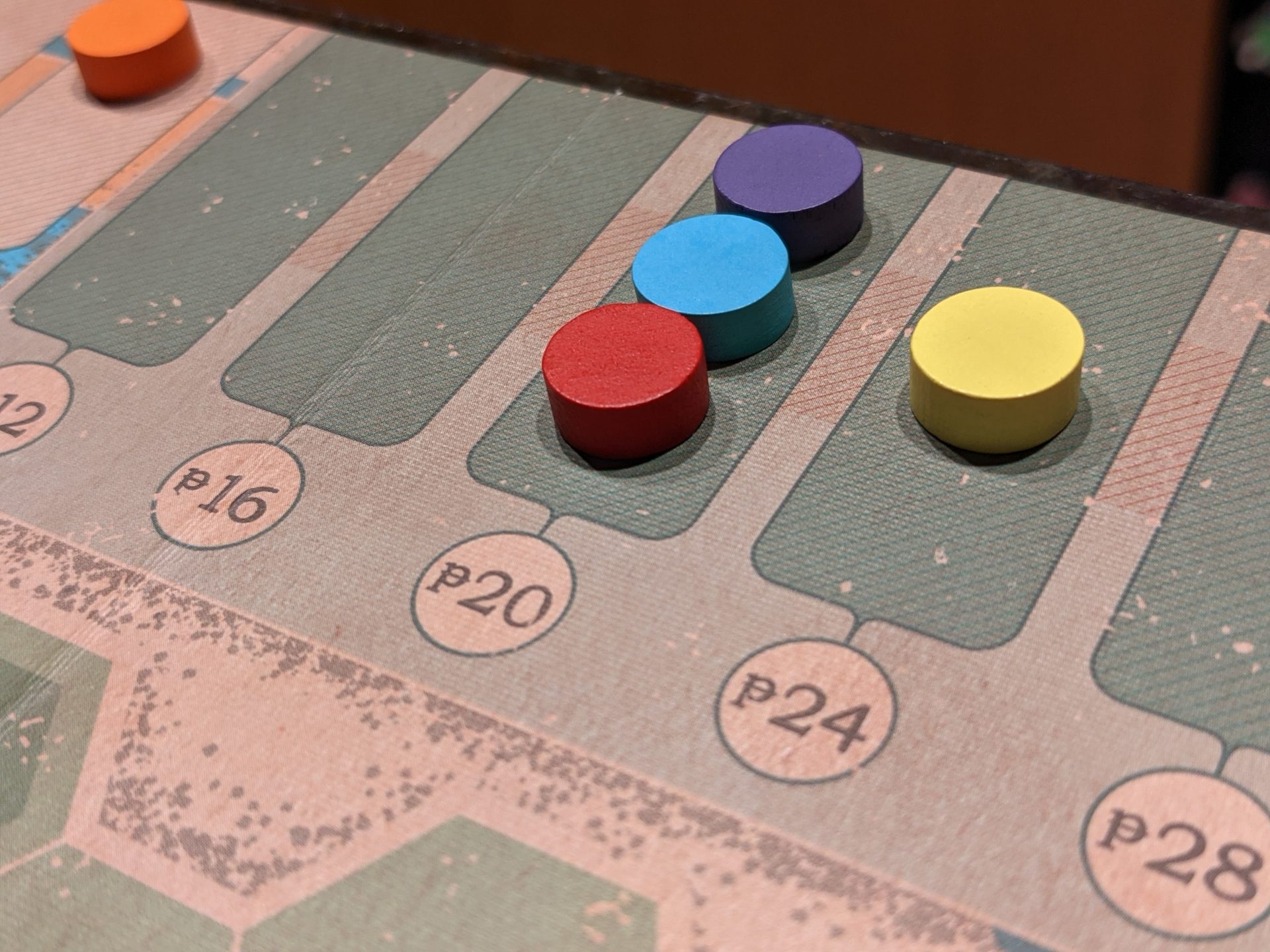
Player Count is Key
I’ve played Iberian Gauge at 3 and 4 players; although I enjoyed all of my plays, I enjoyed it significantly more at 4. All of the shares will likely be purchased in 4-player games and there is just a bit more variety across the different strategies used by each team of shareholders to build rail across the map.
At 3 players, the start is much slower, because everyone is afraid to strike out on their own. In one of these games, I was in mostly peaceful collaboration with the other 2 players; the game was so straightforward that 2 players actually tied because they continuously bought shares in each other’s rail lines. (And no, there is no tiebreaker, which I prefer over coming up with something completely arbitrary!)
But at 4 players, with people investing in different railroads at different prices, things got interesting fast. By the 3rd Stock phase in one game, there was an opening to start the 5th and final rail line, at an opportune time: players were able to use a line that only needed to build a little of its own track before leasing from other rail lines to make moves all the way across the map.
Player count is also important because Iberian Gauge doesn’t scale gameplay based on a smaller collection of players. It’s just a smaller game that makes the Major City connection bonus harder when only 3 people are buying shares. At 4 players, my groups easily earned that bonus with one of the 5 railroads in play by the 8th turn (fifth Build phase) in one game, and were able to get one other railroad to connect through 5 Major City hexes by the end of the game.
I really love that Iberian Gauge doesn’t make any compromises with the smaller count. Still, I really enjoyed the wrinkles of the larger player counts and will likely only play this at 4 or 5 players in the future.
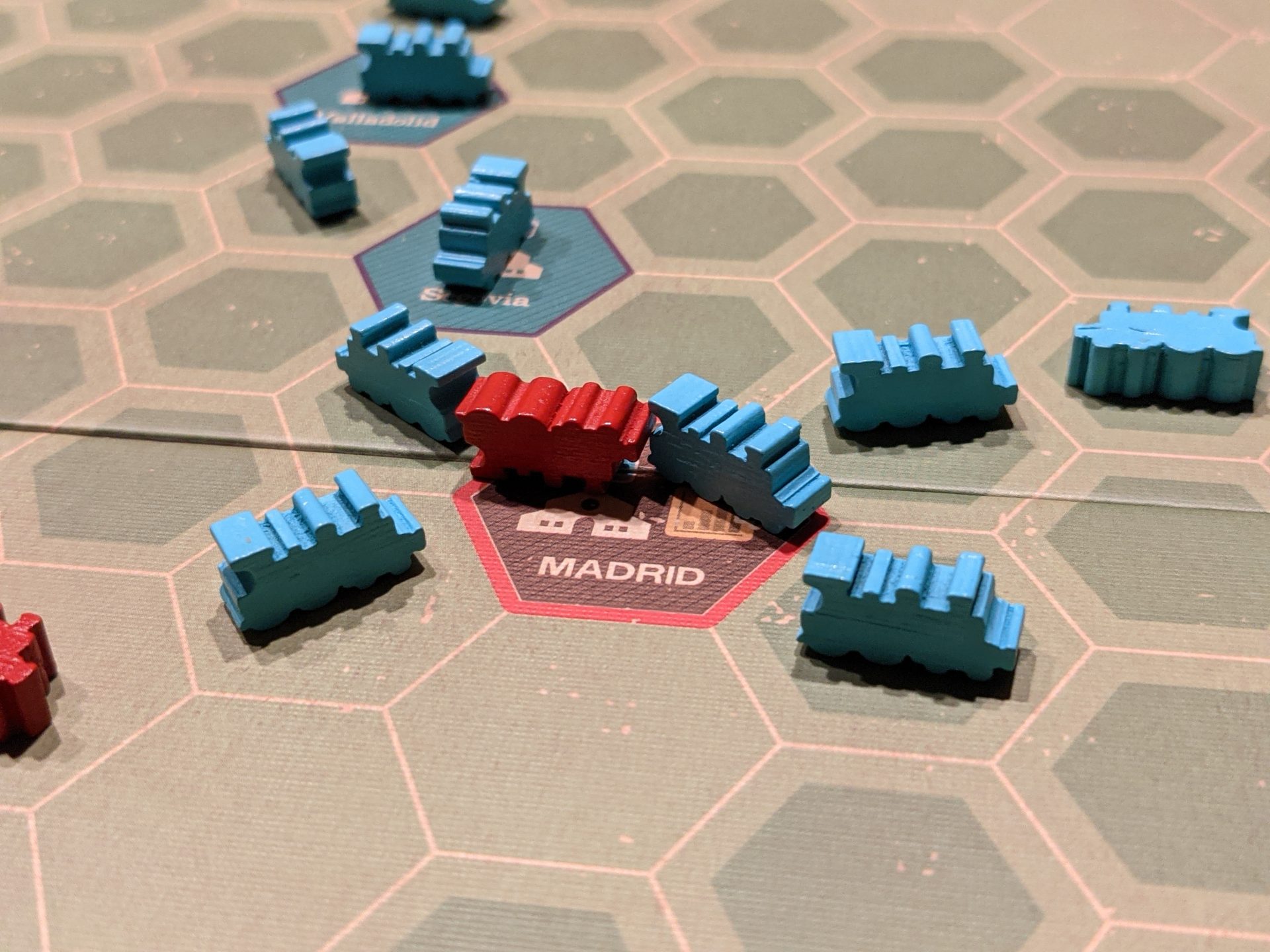
Now, About Those Players…Watch Your Back!
Although it’s not explicitly mentioned on the rulesheet, chicanery, subterfuge, and outright unfriendly play might be important to win a game of Iberian Gauge.
For example, when 3 players invest in a railroad that only has 4 shares available, everyone is basically working together to ensure they will come out ahead with their investment. But in a future Stock round, when one of those 3 players buys their second—and the fourth/final—share in that same railroad, the stakes change SIGNIFICANTLY.
And that can, will, and probably should mean that those other two players are a little less invested in the success of that railroad, because the person who now has 50% of this railroad’s shares stands to come out ahead in profits. Which then might mean that instead of helping to build track towards a Major City, those minority shareholders might just tank the railroad, and use their build action towards placing a locomotive in the direction of the Alboran Sea (for those less familiar with the Spanish coastline, you do not want to build towards the ocean!).
This is especially true when the majority shareholder in a railroad does not build track for that railroad first in Initiative order. In one of my games, the first player used his build action each round to empty the very limited treasury in this railroad to build track in the wrong direction, to ensure that the majority shareholder couldn’t even take a turn to build track.
Yeah.
Iberian Gauge, like other games where you can place your boots on the collective throats of other shareholders, is very interactive. This level of interaction may turn off some players.
This is important because, frankly, the game is less interesting when everyone is nice to each other. Sure, Iberian Gauge is short, but that doesn’t mean it won’t feature at least a little agony when you realize that someone might be out to get you, especially when players sense a runaway leader is in their midst.
I struggle on this point because thematically, if I’m a shareholder in, say, Apple, I’m not about to send spies to the Apple headquarters in Cupertino to sabotage development of the next iPad. And if I’m an investor in Yellow Railroad—Iberian Gauge doesn’t even bother to name the railroads!!—I should want Yellow Railroad to make money, even if it makes more money for another player. Does it make sense that someone could buy a share in Yellow Railroad only to tank its operations?
I don’t think so, but it is allowed in the rules. You just need to know that coming in. If that is your style of game, you are going to absolutely love playing Iberian Gauge. If this is not your style, you’ve been warned!!

Poker Chips!!
I still have not opened the packaging on the 150 pesetas currency cards included with Iberian Gauge.
That’s because for a game like this, you HAVE to use poker chips.
Sure, you could pay out those big dividends late in the game with 20-peseta cards. But, you and I can both agree: it just feels better to get that payday in poker chips. And nothing gives me more pleasure than to play an 18xx-light game with chips, so breaking out the Iron Clays is a no-brainer here. They’re a great way to improve your overall board gaming experience.
And your score totals will make it easy with a small set of chips. You’ll need about 2000 in bank size to run a game of Iberian Gauge, more or less depending on player count and the skill of those players. But my Iron Clays 200 have been more than enough for my games and it just feels good to pay out dividends and bonuses with chips. It’s also easier to tell from across the table how much other players have if you use chips over the included currency cards.

The Train Game Pecking Order
In terms of light-to-medium train games, Iberian Gauge is the perfect fit. It’s got the economic/stock game, it’s got strategic route building, it requires—REQUIRES—the use of poker chips so that I get to chuck chip payments at other players with glee. It is so straightforward that only one of my games has taken longer than an hour. This is a quick game, and the 10 turns really fly by because the Build rounds are simple and the Stock rounds feature narrow yet interesting decisions.
I’ve played Irish Gauge, the first game in the Iron Rails series. I think Irish Gauge is also very good but I think Iberian Gauge is even more streamlined without taking a hit to the strategy required to win. Irish Gauge turn options are more varied: at any time, you could start another auction round for stock shares, or build track; or take a couple of other actions. In Iberian Gauge, you are either in a Stock phase or a Build phase, and maybe my brain just likes that more.
That, and maybe I just enjoy saying “Let’s connect the railroad through Madrid” because I love Spain so much!
Age of Steam? Also fun, but the loan system always leaves new players in a hole. I find that my friends who love the mental grind of a Lacerda game really love Age of Steam; unfortunately, at 5 players, Age of Steam can induce significant analysis paralysis as players try to determine how to make their limited cash move certain kinds of goods to certain parts of the map. I’m not knocking that, but I would rather go full bore into a classic like 1830, 18Chesapeake, or another 18xx system game and spend my whole afternoon playing with 4 friends to scratch that itch.
Iberian Gauge really feels like a light 18xx game for a group that really wants a taste of that style of gameplay in under an hour. Chicago Express also sounds like something I would enjoy but the systems included in Iberian Gauge are a great fit.
Highly recommended!!


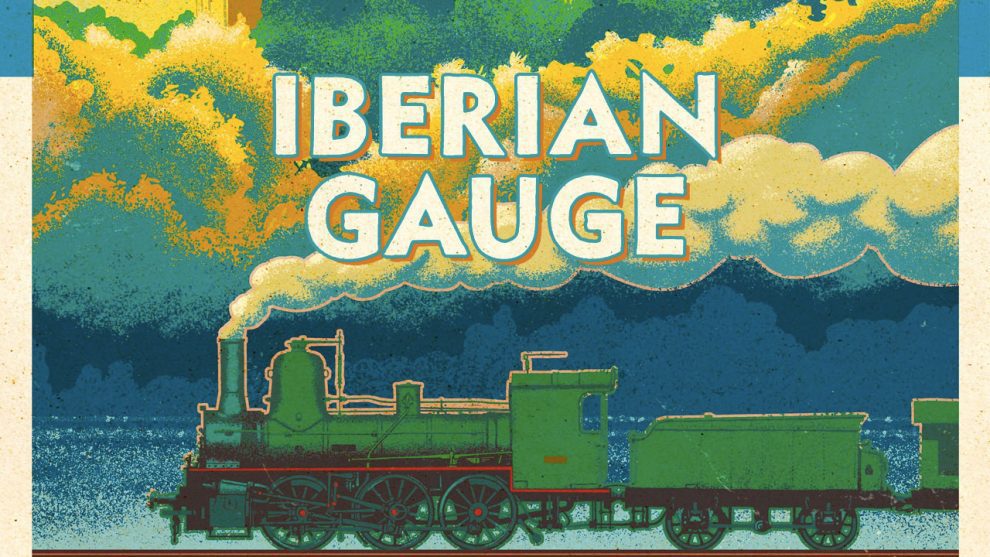




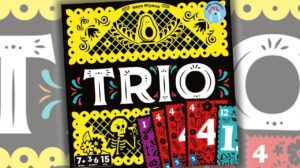




Add Comment